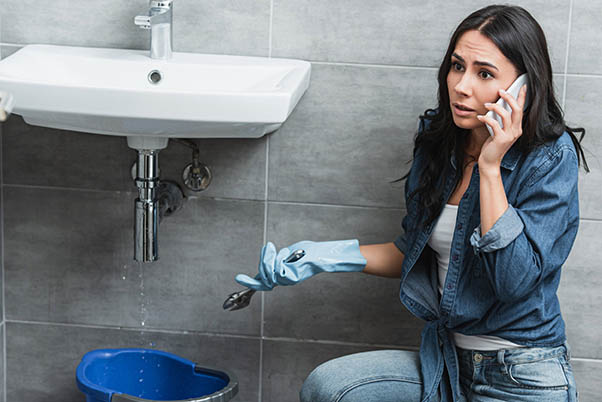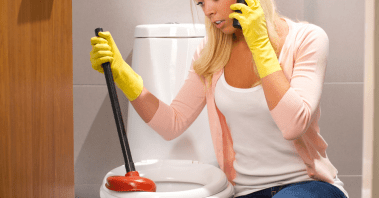What are your thoughts about Expert Tips for Emergency Plumbing Repairs?

Pipes emergencies can strike at any time, causing stress and anxiety and possible damage to your home. Whether it's a burst pipe, a stopped up drainpipe, or a dripping tap, knowing exactly how to handle the circumstance till a professional plumbing gets here can save you from additional issues. This write-up provides vital emergency situation plumbing ideas to aid you reduce damage and gain back control during a pipes situation.
Turn Off the Supply Of Water
The initial step in any type of pipes emergency is to turn off the water. For localized problems, such as a leaking tap or toilet, shut off the shutoff near the fixture. In the case of a significant leakage or burst pipeline, situate your home's main water shut-off valve and turn it off quickly. Recognizing the area of these valves ahead of time can save useful time during an emergency situation.
Address Tiny Leaks with Short-lived Fixes
Tiny leaks can quickly come to be significant troubles if left unattended. Use these momentary fixes till professional aid arrives:
While these fixes aren't long-term, they can help decrease water loss and damage.
Unclog Drains Pipes Safely
A clogged drain can be a discouraging and unpleasant problem. Here's just how to tackle it:
If these techniques don't function, avoid making use of extreme pressure, as it may worsen the obstruction.
Manage Overflowing Toilets
An overruning toilet can create immediate disorder. Here's what you need to do:
Shut Off Your Hot Water Heater
In certain emergencies, such as a ruptured pipeline, it's a good idea to shut down your water heater. This avoids getting too hot or damages to the unit when water quits moving. Turn off the power supply to the water heater (electric or gas) and let it cool to stay clear of potential dangers.
Momentarily Quit a Burst Pipe
A ruptured pipeline can lead to significant water damage in minutes. To alleviate the concern:
Call an expert plumbing professional immediately to deal with the issue completely.
Handle Frozen Water Lines Meticulously
In colder climates, icy pipelines are an usual emergency. If you think an icy pipeline:
Protect against More Damage
Taking quick action to reduce damage can save you time and money over time. Right here's exactly how:
. Have an Emergency Pipes Package
Prepare a fundamental plumbing emergency situation set to deal with minor concerns successfully. Your kit needs to include:
Having these devices handy can make a considerable distinction in your capability to manage emergency situations.
Know When to Call an Expert.
While quick fixes can help momentarily, specific plumbing concerns require prompt expert attention. Call a plumbing professional if:.
Promptly calling a professional makes sure the issue is solved correctly and stops more problems.
Verdict.
Plumbing emergencies can be frustrating, but with the best expertise and tools, you can handle the situation efficiently till help shows up. By switching off the supply of water, dealing with tiny leaks, and utilizing momentary fixes, you can reduce damages and maintain your home safe. Remember, these ideas are short-lived solutions; always get in touch with a licensed plumbing to manage the origin of the problem. Preparation and quick reasoning are your ideal allies in any plumbing emergency.
Top Tips for Emergency Plumbing Leak Repairs
Identifying the Leak Source
To properly address a plumbing leak, begin by locating the source using a flashlight and inspecting visible pipes for any signs of water accumulation or dripping. Look for water stains, mold growth, or musty odors which can indicate hidden leaks. Follow the water trail to pinpoint the origin of the leak. Check under sinks, around appliances, and near water heaters as these are common areas for leaks to occur.
If the leak is coming from a visible pipe joint, tightening the connection may solve the issue. Use a wrench to secure the joint without over-tightening, which could cause damage. For small cracks or holes, a temporary fix can be applied using epoxy putty or a pipe clamp until a permanent solution is implemented.
Remember to turn off the water supply before attempting any repairs to prevent further damage. Once the leak is identified, take necessary steps to either fix it yourself or contact a professional plumber for assistance.
Shutting Off the Water Supply
Before initiating any plumbing repairs, make sure you shut off the water supply to prevent further leakage. Locate the main shut-off valve for your property. This valve is typically found near the water meter or where the main water line enters your home. Turn the valve clockwise to shut off the water flow. If you’re dealing with a localized leak, like a sink or toilet, you can also shut off the water supply to that specific fixture by using the individual shut-off valves located underneath or behind the fixture.
Shutting off the water supply is essential to prevent more water from entering the system and causing additional damage. By taking this initial step, you can minimize the extent of the leak and prevent potential flooding in your home. Remember to inform everyone in the household about the water shut-off location in case of future emergencies. Once the water is off, you can proceed with identifying and addressing the leak source to resolve the issue effectively.
Temporary Leak Containment
If you’ve successfully shut off the water supply, the next step is to contain the leak temporarily to prevent further damage. Start by locating the source of the leak. Check for any visible cracks, holes, or burst pipes. Once identified, use materials like duct tape, pipe clamps, or rubber patches to cover the damaged area. For smaller leaks, a bucket or container can be placed underneath to catch dripping water.
If the leak is coming from a pipe joint, tightening the connection with a wrench might help reduce the leakage temporarily. Remember, these are just temporary solutions to prevent immediate damage. It’s essential to contact a professional plumber to assess and fix the issue permanently.
While containing the leak, keep an eye on the affected area for any signs of worsening. If the leak worsens or you’re unable to contain it effectively, don’t hesitate to contact emergency plumbing services for immediate assistance. Taking quick action to contain the leak can help minimize water damage and save you from costly repairs in the long run.
Contacting Emergency Plumbing Services
When facing a plumbing emergency, promptly reach out to professional plumbing services for immediate assistance. Contacting emergency plumbing services is essential to prevent further damage to your property. These professionals have the expertise and tools to address the issue quickly and effectively. When you call for emergency plumbing services, provide as much detail as possible about the leak, its location, and any steps you have taken to contain it. This information will help the plumbers assess the situation and come prepared to tackle the problem.
Ensure that you have the contact information for emergency plumbing services readily available, so you can act swiftly in case of a leak. Many plumbing companies offer 24/7 emergency services, so don’t hesitate to reach out, even if the leak occurs outside regular business hours. By contacting professional plumbers promptly, you can mitigate the damage caused by the leak and restore the functionality of your plumbing system efficiently.
Post-Repair Leak Prevention
To prevent future leaks after repairs, conduct a thorough inspection of all plumbing connections. Start by checking for any signs of corrosion, rust, or wear on pipes, fittings, and fixtures. Tighten any loose connections and replace any damaged parts to guarantee a secure fit. Additionally, inspect the seals around toilets, sinks, and tubs to make sure they’re intact and not deteriorating.
Consider installing water leak detectors in key areas of your home, such as near water heaters, under sinks, and around appliances like washing machines and dishwashers. These detectors can alert you to leaks early on, helping you address them before they cause significant damage.
Regularly monitor your water bill for any unexpected spikes, as this could indicate a hidden leak. If you notice a sudden increase in water usage without a corresponding change in your habits, it’s crucial to investigate the issue promptly.
https://callprofessorplumb.com/articles/top-tips-for-emergency-plumbing-leak-repairs/

I was guided to that article on What to Do During a Plumbing Emergency through a buddy on a different site. In case you enjoyed reading our page please remember to share it. Thanks a bunch for your time. Revisit us soon.
Call Today